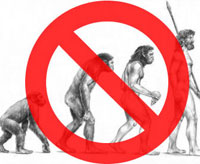Pravda | by Babu G. Ranganathan | Dec. 12, 2009

Millions of high school and college biology textbooks teach that research scientist Stanley Miller, in the 1950’s, showed how life could have arisen by chance. Nothing could be further from the truth.
Miller, in his famous experiment in 1953, showed that individual amino acids (the building blocks of life) could come into existence by chance. But, it’s not enough just to have amino acids. The various amino acids that make-up life must link together in a precise sequence, just like the letters in a sentence, to form functioning protein molecules. If they’re not in the right sequence the protein molecules won’t work. It has never been shown that various amino acids can bind together into a sequence by chance to form protein molecules. Even the simplest cell is made up of many millions of various protein molecules. [Read more…]
